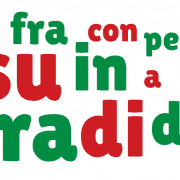Italian direct object pronouns can be very tricky to learn. In linguistics, the pronoun is a variable part of speech that has the following functions: to replace a part of the previous text; replace part of the subsequent text; refer to an element of the context in which the discourse takes place, which is implied.
We have already seen the Italian Indirect Object Pronouns here, if you want to repeat them.
Now we will see Italian Direct Object Pronouns:
What Are Direct Object Pronouns?
The direct object is the element of a sentence which is directly involved in or affected by the action described by a verb. In other words, it gets acted upon by a verb, and answers the questions what? or whom? The basic construction is Subject + verb + direct object.
Here is an examples of the formula in action:
La ragazza mangia gli spaghetti.
the girl eats spaghetti.
Here, the subject is la ragazza (the girl) , and the verb is mangia (eat). What is the girl eating? Spaghetti. So, spaghetti is the direct object, because it receives the action of the verb in question.
Easy, right?
See some other examples below:
Alessandro suona il basso.
Alessandro plays the bass guitar.
What does Alessandro play? The bass guitar (il basso), so it will be the direct object.
Adoro viaggiare.
I love traveling.
What do I love? Traveling. The direct object is traveling, (viaggiare)
Antonella sta lavando i piatti.
Antonella is washing the dishes.
What is Antonella washing? The dishes (i piatti) are the direct object.
Gianluca legge il giornale tutti i giorni.
Gianluca reads the newspaper every day.
What does Gianluca read? The newspaper (il giornale) is the direct object.
Before proceeding, if you want to repeat grammar, here there are books useful for you.
When To Use A Direct Object Pronoun In Italian?
You might have seen little words in Italian like mi, ti, lo, ci, etc. These words are called direct object pronouns (pronomi diretti). Always paired with transitive verbs, direct object pronouns are used to replace the object of a sentence. This usually happens when the object is made obvious by the context, or has already been mentioned.
Here are some examples:
Mi aiuti, per favore?
Could you help me, please?
Non ti riconosco più!
(Literally: I don’t recognize you anymore!) You’re not the same person I used to know
Chi te l’ha detto?
Who told you that?
But before we go into further detail, let’s take a closer look at transitive verbs.
What Is A Transitive Verb?

The word transitive comes from the Latin trānsīre, meaning to pass or to cross. It describes an action that moves from the subject directly to the object, without making use of prepositions, such as di (of), da (from), per (for), a (to), etc. A transitive verb is one that only makes sense if it transfers its action to something or someone. In other words, it needs to exerts its action on an object.
Without an object to affect or act upon, transitive verbs, like dire (to say), scegliere (to choose), comprare (to buy) and scrivere (to write), can’t function and the sentence that they inhabit would seem incomplete.
Here are some examples:
Valentina ha adottato un cane del canile.
Valentina adopted a dog from the shelter
Ilaria ha scritto una lettera di reclamo.
Ilaria wrote a complaint letter.
Tommaso sta facendo i compiti.
Tommaso is doing his homework.
Ho frequentato un corso di italiano all’università.
I attended an Italian course at university.
Verbs that do not require an object to act upon, like sedere (to sit) and giacere (to lie), are called intransitive.
NOTE: some Italian verbs that take a direct object, such as cercare (to look for), ascoltare (to listen to) and guardare (to look at), correspond to English verbs that are used with prepositions.
In Italian, direct objects are not preceded by a preposition.
For example:
Stai cercando lavoro?
Are you looking for a job?
Sto ascoltando un podcast.
I’m listening to a podcast.
La guardava con circospezione.
He was looking at her cautiously.
How do I use a direct object in Italian?
Italian direct object pronouns can be split into two types:
- unstressed direct object pronouns;
- stressed direct object pronouns.
Let’s have a look at them.
Unstressed Direct Object Pronouns
Here are the Italian unstressed direct object pronouns:
mi – me (first person singular)
ti – you (second person singular)
lo – him (third person masculine singular)
la – her (third person feminine singular)
La – you (polite singular)
ci – us (first person plural)
vi – you (second person plural)
li – them (third person masculine plural)
le – them (third person feminine plural)
As you can see, direct object pronouns look very similar to reflexive and indirect object pronouns, so try not to get them confused.
Unlike English, you usually put unstressed direct object pronouns immediately before the conjugated verb.
Have a look at these examples to get an idea of how it works:
Quell’uomo mi detesta.
That man hates me.
Ti posso richiamare più tardi?
Can I call you back later?
Sì, lo so!
Yes, I know (it)!
La moto è pronta, la puoi venire a ritirare quando vuoi
Your motorcycle is ready, you can pick it up whenever you want
Che Dio ci aiuti!
God help us!
Vi voglio qui entro le sette.
I want you here by seven o’clock.
Mi piacciono i ravioli con ricotta e spinaci, li mangerei ogni giorno se potessi.
I like ravioli stuffed with ricotta and spinach, I would eat them every single day if I could.
Ti ricordi le nostre insegnanti delle elementari? Certo, le ricordo perfettamente.
Do you remember our elementary school teachers? Sure, I remember them all perfectly.
Italian Direct Object Pronouns – LA , LO , LE , LI

As you can see from the above examples above, la (her/it), lo (him/it), le (them) and li (them) can refer both to people and objects.
As you probably know, Italian grammar has gendered nouns, which means that nouns – even those referring to inanimate objects, places and abstract ideas – can be either masculine or feminine.
There’s no neuter gender in Italian. This can be a strange concept to English speakers, I know.
To translate it into Italian, you need to use lo (him/it) if the noun referred to is masculine, and la (her/it) if it is feminine.
Li (them) and le (them) are the plural equivalents of lo (him) and la (her/it).
Let’s look at some examples:
Ho un biglietto omaggio per lo spettacolo, lo vuoi?
I’ve got a free ticket for the show, do you want it?
Here un biglietto becomes lo because it’s masculine singular.
Hai visto la mia sciarpa? La cerco da mezz’ora! Have you seen my scarf? I’ve been looking for it for half an hour!
La sciarpa is feminine singular, so the direct pronoun to use would be la.
Ho preparato le polpette. Le vuoi assaggiare? I made meatballs. Do you want to taste them?
Le polpette is feminine plural so the corresponding direct object pronoun is le.
Arturo, hai comprato i francobolli? Sì, li ho comprati stamattina
Arturo, did you buy the stamps? Yes, I bought them this morning.
I francobolli is masculine plural, the direct object pronoun is li.
Direct Object Pronouns with NON
When the word non (not) is used to turn an affirmative sentence into a negative one, it goes before the direct object pronoun.
Have a look at the following examples:
Non mi interrompere quando parlo.
Don’t interrupt me when I’m talking.
Non lo sapevo!
I didn’t know!
Perché non le hai avvertite?
Why didn’t you warn them?
The pronouns mi (me), ti (you), la (her) and lo (him) can drop their vowels and be shortened to m’, t’ and l’ before an “h” or a vowel.
Here are some examples:
Chi l’avrebbe mai detto!
Who would ever have thought it!
Gli inquirenti non m’avrebbero creduto.
Investigators wouldn’t have believed me.
Giorgia non ha salutato Lorenzo perché non l’aveva riconosciuto.
Giorgia didn’t greet Lorenzo because she had not recognized him.
Non l’ho ancora letto.
I haven’t read it yet.
However, keep in mind that the plural forms li (them) and le (them) can’t drop their vowel.
Stressed Direct Object Pronouns
Here is what stressed direct object pronouns look like:
me – me (first person singular)
te – you (second person singular)
lui – him (third person masculine singular)
lei – her (third person feminine singular)
Lei – you (polite singular)
noi – us (first person plural)
voi – you (second person plural)
loro – them (third person plural)
As you might have noticed, the stressed direct object pronouns are exactly the same as the Italian subject pronouns (io, tu, lui/lei, noi, voi, loro), except that me (me) is used instead of the first person singular io (I) and te (you) is used instead of the second person singular tu (you).
Stressed direct object pronouns usually go after the verb, and are used to emphasize that you are referring to a specific person and not to somebody else.
For example:
Cercavo proprio te!
I was looking for you! (not for someone else)
Giacomo non guardava lei, guardava proprio te.
Giacomo wasn’t looking at her, he was looking at you.
Sarebbe stato meglio assumere te, non lui.
It would have been better to hire you, not him.
In Italian, stressed and unstressed direct object pronouns are not interchangeable. Using the stressed forms instead of the unstressed ones can generate examples of clumsy Italian. Use the stressed forms only when you want to give emphasis to the person you are referring to.
Direct Object Pronouns In The Passato Prossimo

As you may have already guessed from the above examples, when using an unstressed direct object pronoun with a compound verb, like the present perfect (passato prossimo), the past participle matches in gender and number with it.
See some examples below:
Hai visto Noemi? Sì, l’ho vista ieri a scuola.
Have you seen Noemi? Yes, I saw her yesterday at school.
Hai invitato Roberto al matrimonio? No, non l’ho invitato.
Have you invited Roberto to your wedding? No, I haven’t invited him.
Hai visto Francesca e Simona? Sì, le ho viste ieri in palestra.
Have you seen Francesca and Simona? Yes, I saw them yesterday at the gym.
Hai invitato Davide e Leonardo al pranzo di Natale? Sì, li ho invitati. Have you invited Davide and Leonardo to the Christmas Lunch? Yes, I’ve invited them.
Italian Direct Object Pronouns In All The Italian Tenses
The same goes with all the other compound tenses, like the past perfect (trapassato prossimo), future perfect tense (futuro anteriore), perfect conditional (condizionale passato), past subjunctive (congiuntivo passato) and pluperfect subjunctive (congiuntivo trapassato).
Let’s look at some examples:
PAST PERFECT
Matteo aveva prenotato il volo due giorni prima di partire. → Matteo lo aveva prenotato due giorni prima di partire.
Matteo had booked the flight two days before leaving. → Matteo had booked it two days before leaving.
FUTURE PERFECT TENSE
Dopo che avrai finito i compiti, potrai andare a giocare al parco. → Dopo che li avrai finiti, potrai andare a giocare al parco.
After you will have finished your homework, you can go play in the park → After you will have finished it, you can go play in the park
PERFECT CONDITIONAL
Avrei voluto salutare Silvia prima che partisse. → L’avrei voluta salutare prima che partisse.
I would have liked to say goodbye to Silvia before she left → I would have liked to say goodbye to her before she left
PAST SUBJUNCTIVE
Non credo che l’abbiano fatto apposta.
I don’t think they did it on purpose.
PLUPERFECT SUBJUNCTIVE
Se l’avessi saputo, te l’avrei detto.
If I had known it, I would have told you.
Italian Direct Object Pronouns In The Imperative
When you are using the imperative, the unstressed direct object pronoun joins with the verb to make a single word.
Some examples will make it clearer:
Aiutami!
Help me!
Ha telefonato il commercialista, richiamalo!
The accountant called, call him back!
Lasciali stare!
Leave them alone!
Devo chiamare i soccorsi? Sì, chiamali subito.
Should I call 911? Yes, please, call it right away.
NOTE: With short verbs, like fare (to do) and dire (to tell, to say), you have to double the consonant the pronoun starts with. For example:
Dillo al medico!
Tell the doctor!
Luca, falla finita!
Stop it, Luca!
Fallo subito!
Do it now!
Italian Direct Object Pronouns In The Infinitive

With the infinitive (infinito), the unstressed direct object pronoun gets tacked to the end of it to make a single word. You just need to take off the final -e of the verb.
Here are some examples
Come fai a dirlo?
How can you say that?
Venite a trovarmi!
Come visit me!
Italian Direct Object Pronouns With Modal Verbs
With modal verbs, the direct object pronouns can either be attached to the end of the infinitive or precede the conjugated verb. For example:
Non vi posso accompagnare / Non posso accompagnarvi.
I can’t come with you.
Non li volevo disturbare all’ora di cena / Non volevo disturbarli all’ora di cena.
I didn’t want to disturb them at dinnertime.
Conclusions
There is a lot to take in here, I know, but I hope this has given you a solid foundation for using Italian stressed and unstressed direct object pronouns in all kinds of different situations. Practice a little every day and learning how to use them will be a breeze!

By: Lucia Aiello
Lucia Aiello is one of the co-founders of LearnItalianGo. Born and raised in Italy, she is a passionate Italian teacher and language enthusiast.







